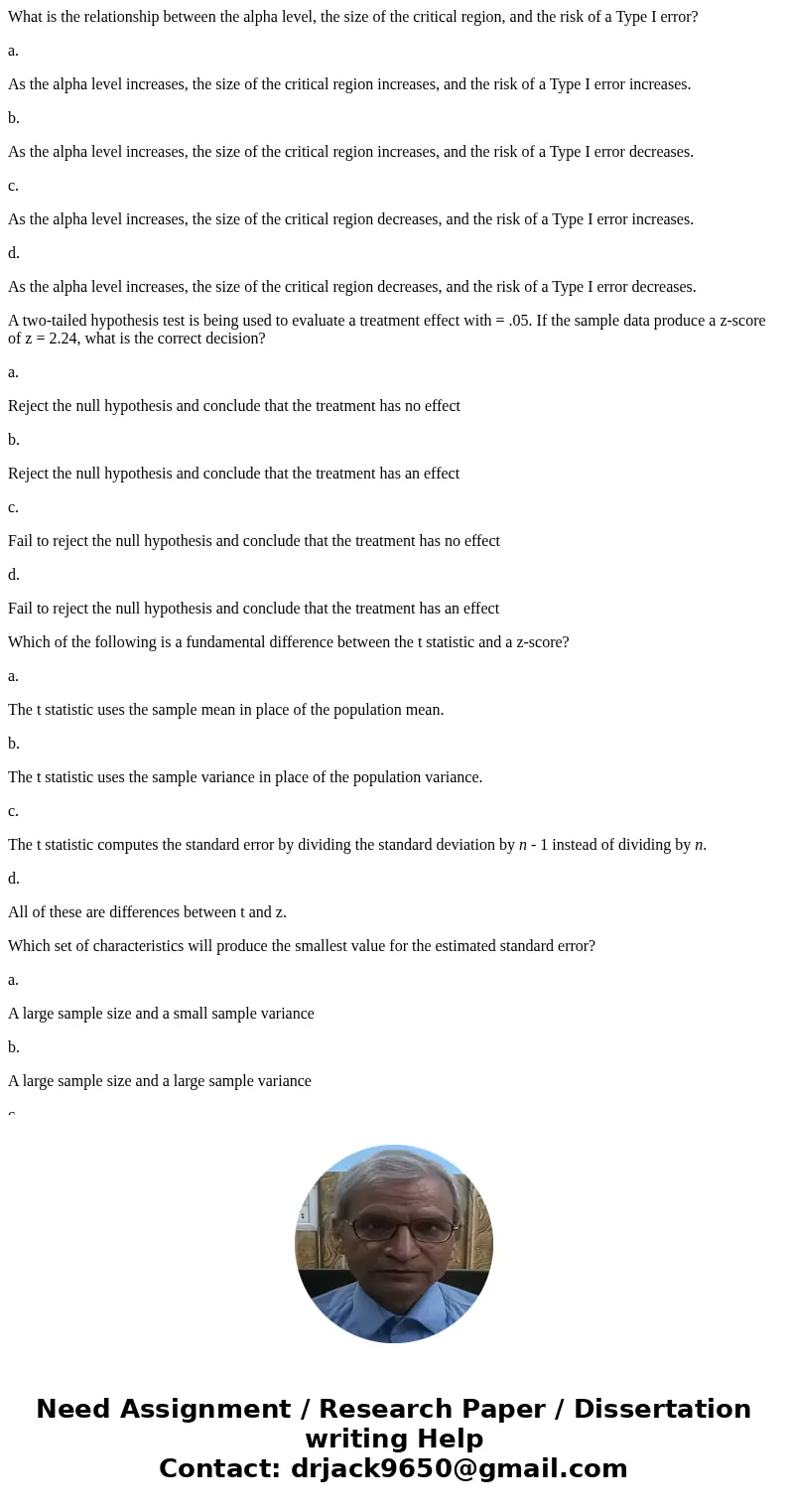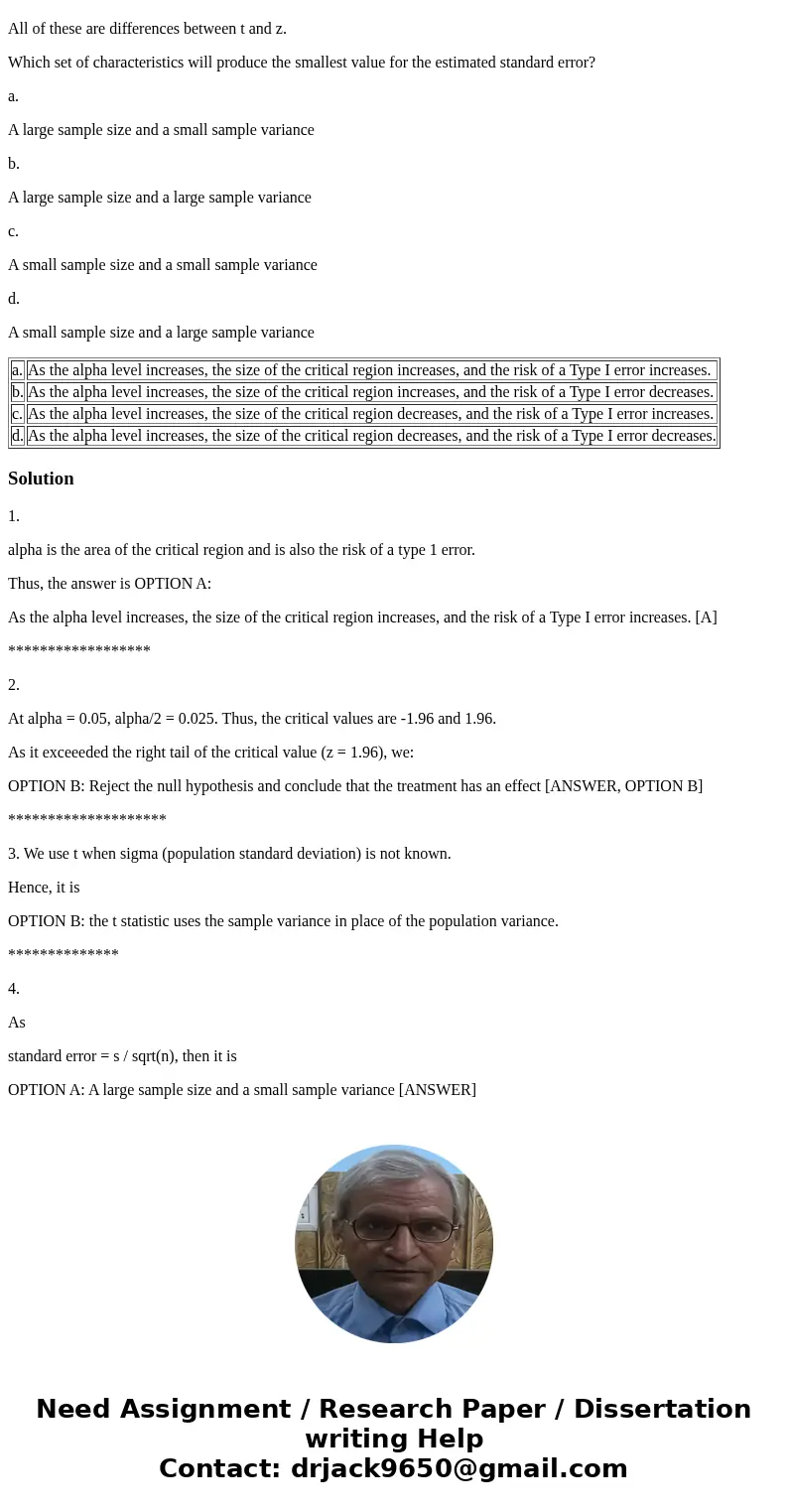What is the relationship between the alpha level the size of
What is the relationship between the alpha level, the size of the critical region, and the risk of a Type I error?
a.
As the alpha level increases, the size of the critical region increases, and the risk of a Type I error increases.
b.
As the alpha level increases, the size of the critical region increases, and the risk of a Type I error decreases.
c.
As the alpha level increases, the size of the critical region decreases, and the risk of a Type I error increases.
d.
As the alpha level increases, the size of the critical region decreases, and the risk of a Type I error decreases.
A two-tailed hypothesis test is being used to evaluate a treatment effect with = .05. If the sample data produce a z-score of z = 2.24, what is the correct decision?
a.
Reject the null hypothesis and conclude that the treatment has no effect
b.
Reject the null hypothesis and conclude that the treatment has an effect
c.
Fail to reject the null hypothesis and conclude that the treatment has no effect
d.
Fail to reject the null hypothesis and conclude that the treatment has an effect
Which of the following is a fundamental difference between the t statistic and a z-score?
a.
The t statistic uses the sample mean in place of the population mean.
b.
The t statistic uses the sample variance in place of the population variance.
c.
The t statistic computes the standard error by dividing the standard deviation by n - 1 instead of dividing by n.
d.
All of these are differences between t and z.
Which set of characteristics will produce the smallest value for the estimated standard error?
a.
A large sample size and a small sample variance
b.
A large sample size and a large sample variance
c.
A small sample size and a small sample variance
d.
A small sample size and a large sample variance
| a. | As the alpha level increases, the size of the critical region increases, and the risk of a Type I error increases. |
| b. | As the alpha level increases, the size of the critical region increases, and the risk of a Type I error decreases. |
| c. | As the alpha level increases, the size of the critical region decreases, and the risk of a Type I error increases. |
| d. | As the alpha level increases, the size of the critical region decreases, and the risk of a Type I error decreases. |
Solution
1.
alpha is the area of the critical region and is also the risk of a type 1 error.
Thus, the answer is OPTION A:
As the alpha level increases, the size of the critical region increases, and the risk of a Type I error increases. [A]
******************
2.
At alpha = 0.05, alpha/2 = 0.025. Thus, the critical values are -1.96 and 1.96.
As it exceeeded the right tail of the critical value (z = 1.96), we:
OPTION B: Reject the null hypothesis and conclude that the treatment has an effect [ANSWER, OPTION B]
********************
3. We use t when sigma (population standard deviation) is not known.
Hence, it is
OPTION B: the t statistic uses the sample variance in place of the population variance.
**************
4.
As
standard error = s / sqrt(n), then it is
OPTION A: A large sample size and a small sample variance [ANSWER]


 Homework Sourse
Homework Sourse